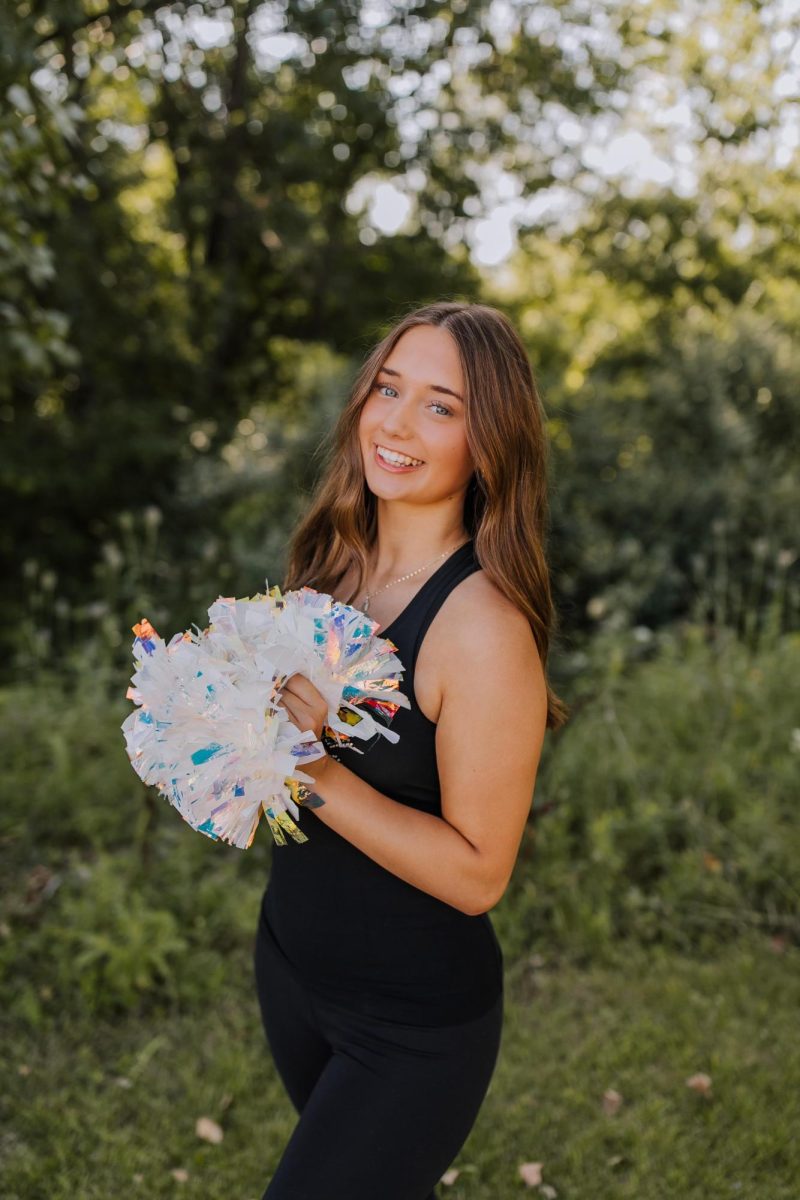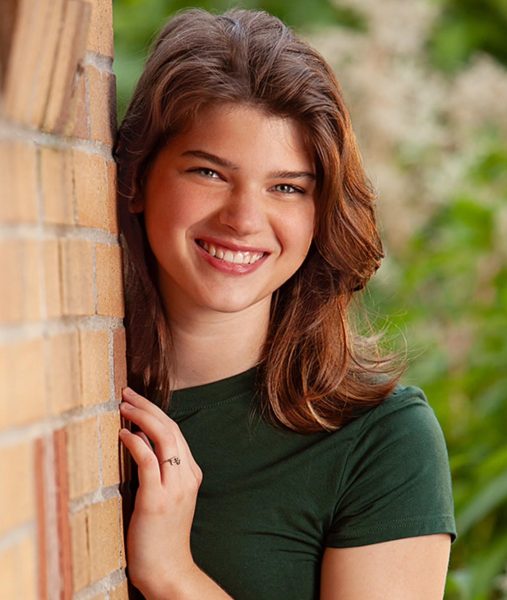Anyone who knows senior Myla Morey would not describe her as having two left feet.
Having been refining her dance skills since the age of two, she’s become exceptionally coordinated, not just with her body but with her mind. For the past 17 years, she’s been involved in the sport, from school competitions on the dance team to her leadership in a separate studio; it’s been the pivotal point her entire life orbits around.
“My main hobby is dance,” Myla said. ‘It takes up so much of your time, even when you’re so young that you don’t even really have time to try any other sports. I think I maybe tried softball once for two weeks until saying it wasn’t for me.”
Showing her dedication to dance, some people in her grade have mentioned taking classes with her as a kid but leaving only after a year—Myla has stuck with it much longer.
While she began in the studio, her involvement on the dance team during high school has given her a larger variety of skills to focus on, as the stylistic choices are very distinct. The dance team only targets three approaches to their routines: pom, jazz, and hip-hop. However, her studio offers an unlimited range of categories, but both have the similar end goal of performing their greatest in four competitions a year and heading off to nationals.
Her time at the studio gives her the time necessary to further develop the strengths that she has, but at school, their even slimmer time frame causes most work to be group-oriented.
“At the studio, I take technique classes every week,” Myla said. “And for school, we just have regular practices for our routines. A lot of the girls do both so that they can get their technical skills at their studio and then just work on the dances at school.”
Besides the technical differences between her two dancing lives, the studio allows all ages to participate, which is a major contrast to the school that only has girls in the four grades. While the similarity in ages for the dance team is beneficial for learning more advanced routines, she admits that there is a slight separation in the group.
By the time many people get to high school, their friend groups are already formed. They have the people they’re most comfortable with, so the dance team rehearsals are mainly for just practicing the moves they have to perfect. Myla’s experience in the studio has shown her that the environment there has much more social engagement.
“In the studio is where the family part comes in,” Myla said. “You know all the moms, you know all the girls, you know all their siblings, you know all the two-year-olds, you know the 18-year-olds, and you know everyone in between. I’m there three nights a week for over four hours. I see everybody on the weekends, and I’ve been with some of them for my whole life, so it’s very involved and committed. At the studio, your dance friends are your life friends.”
Not only does she sense more social freedom in the studio, but that is where the creativity level of the sport gets taken to the next level. Every year, the themes, props, costumes, and simply the ideas for their productions are assembled through a more artistic lens.
The dance team is geared toward the school: the “Ranger” theme is prevalent in their pom dance, which is purely for school spirit purposes, and their costumes are the same, year after year. Even though the school team doesn’t provide the freedom that the studio does, Myla acknowledges that the sport, in general, imparts a creative liberty that is unique amongst most others. That is one of the main factors that has kept her loyal to dance for the past 16 years.
“I feel like other sports that people fall out of or decide not to continue are very [repetitive],” Myla said. “Obviously, games are different, and different things happen, but you’re playing the same sport every time, whereas in dance, every year the routines are totally different. There are different themes, different vibes, different emotions, and I’m able to portray a lot of different ‘characters’ as well, which helps me stay committed and excited about what’s coming next.”
While many of the schools’ sports teams are showcased with consistency—the audience knows how the game is played and exactly what they’ve come to see—there is an air of mystery that comes with each dance performance. Nobody knows what to expect in the soundtrack, and their synchrony with each tough technique is impressive.
However, there is a side to the sport that most high school students don’t witness.
At every assembly and football game, the mood is extremely upbeat, the dancing is fast-paced, and the songs include lively, fan favorites. On the other hand, their annual jazz competitions are quite the opposite. They always center around a solemn theme, and the emotions they are required to portray are much deeper than what lies on the surface. The emotion that can be seen in each routine, whether cheerful or sorrowful, Myla credits to the training from her coaches.
“You definitely have to trust your coaches and dance teachers because sometimes they have visions, and you have to go into it with an open mind,” Myla explained. “They might have this idea of what they want your routine to look like, and you’re just there to execute it. You have to be open to portraying your emotions through your dancing, whereas even in other performance sports, like cheer, you don’t have to. In dance, you’re telling a story or a theme, so you try to relay the feelings of the song through your emotions.”
Looking back, whether it be a couple of hours at her studio or an after-school practice with her peers for the dance team, Myla has many takeaways from each environment she’s chosen to participate in. Seeing the apparent progress over the years has proved her love for the sport, but she’s always looking for ways to convince others of its complex involvement, as it has a vastly different approach to mainstream athletics.
“Dance is so much more in-depth than people think,” Myla said. “It takes so many different aspects, and it’s good to get people on the side of believing that dance takes just as much hard work as other sports do. Especially in the studio, it’s so different from what people think they see. There’s a lot of history and dance culture that people just don’t know about.”




























































































